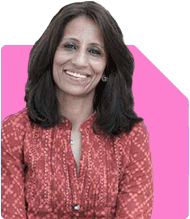Can I retire with a monthly income of 1.5 lakh at 35 with a 3-year-old daughter?
Ramalingam Kalirajan |10876 Answers |Ask -Follow
Mutual Funds, Financial Planning Expert - Answered on Aug 22, 2024
He has an MBA in finance from the University of Madras and is a certified financial planner.
He is the director and chief financial planner at Holistic Investment, a Chennai-based firm that offers financial planning and wealth management advice.... more

I have a daughter who is 3 years old, me and my wife are working and our age is 35 and 32. Our family income is 2.4 lakh, i am doing mutual funds of 80k per month, in mutual fund i have 19 lakh, i monthly do 12.5k ppf to me and my wife account each. For my daughter we took sukanya on which we put 5k monrhly, also i do nps of 6k monthly, in pf i have 6lakh and monthly contribution of 28k. I also own a house. When can i retire with monthly income of 1.5 lakh
Let's break down your situation and create a plan for your early retirement goal with a monthly income of Rs. 1.5 lakh.
Current Investments Overview
1. Mutual Funds:
You are investing Rs. 80,000 per month in mutual funds.
Your current corpus is Rs. 19 lakh, which is growing steadily.
2. Public Provident Fund (PPF):
You contribute Rs. 12,500 each to your and your wife's PPF accounts, totaling Rs. 25,000 per month.
3. Sukanya Samriddhi Yojana (SSY):
You contribute Rs. 5,000 monthly towards your daughter’s SSY account. This will secure her future education and marriage expenses.
4. National Pension System (NPS):
Your NPS contribution is Rs. 6,000 monthly. This will provide you with an additional income stream post-retirement.
5. Provident Fund (PF):
Your PF balance is Rs. 6 lakh with a monthly contribution of Rs. 28,000. This is a solid base for your retirement corpus.
6. Property Ownership:
You own a house, which adds to your financial security.
Evaluating Your Retirement Goal
Your goal is to retire with a monthly income of Rs. 1.5 lakh. To achieve this, we need to assess the following:
1. Desired Corpus for Retirement:
To generate Rs. 1.5 lakh per month post-retirement, you would need a substantial corpus. This corpus should be large enough to sustain withdrawals over your expected retirement years without depleting prematurely.
2. Inflation Consideration:
Keep in mind that inflation will erode purchasing power. Hence, the corpus must grow to cover rising expenses over time.
Retirement Planning Strategy
1. Increase Equity Exposure:
Continue your SIPs in mutual funds. Equity funds tend to deliver inflation-beating returns over the long term. A balanced portfolio with a mix of large-cap, mid-cap, and small-cap funds can provide growth while managing risk.
2. PPF and SSY Contributions:
Your contributions to PPF and SSY are excellent for long-term security. However, these are more conservative investments. While they offer safety and tax benefits, they may not grow as fast as your equity investments.
3. NPS for Retirement Corpus:
NPS is a good option for retirement as it provides an additional income stream and tax benefits. However, the annuity component may limit your flexibility. Consider balancing NPS with other flexible investment options.
4. Consider SWP from Mutual Funds:
A Systematic Withdrawal Plan (SWP) from your mutual funds can provide you with a regular income post-retirement. This strategy allows your corpus to continue growing while you withdraw a fixed amount periodically.
When Can You Retire?
1. Calculating the Required Corpus:
To retire with a monthly income of Rs. 1.5 lakh, you will need a significant corpus. Assuming a withdrawal rate of 4-6% per annum, and considering inflation, the required corpus could range from Rs. 3 crore to Rs. 5 crore or more.
2. Projecting Your Corpus Growth:
With your current investments and contributions, your corpus will grow over time. Assuming an average annual return of 10-12% on your equity investments, and conservative returns on your PPF, SSY, and NPS, you could reach your target corpus within the next 10-15 years.
3. Adjustments and Monitoring:
Regularly review your portfolio to ensure it is on track to meet your retirement goal. You may need to increase your SIP amounts or adjust your asset allocation as you get closer to retirement.
Final Insights
You are on a solid path towards achieving financial independence. With your disciplined savings and investment strategy, you have laid a strong foundation. To retire with a monthly income of Rs. 1.5 lakh, continue focusing on growing your corpus through equity investments, and consider using an SWP for passive income during retirement.
Remember to regularly review and adjust your financial plan to stay aligned with your goals. With careful planning and consistent investments, you should be able to retire comfortably within the next 10-15 years.
Best Regards,
K. Ramalingam, MBA, CFP,
Chief Financial Planner,
www.holisticinvestment.in
You may like to see similar questions and answers below
Ramalingam Kalirajan |10876 Answers |Ask -Follow
Mutual Funds, Financial Planning Expert - Answered on Jul 01, 2024
Ramalingam Kalirajan |10876 Answers |Ask -Follow
Mutual Funds, Financial Planning Expert - Answered on Oct 03, 2024
Ramalingam Kalirajan |10876 Answers |Ask -Follow
Mutual Funds, Financial Planning Expert - Answered on Nov 21, 2024
Ramalingam Kalirajan |10876 Answers |Ask -Follow
Mutual Funds, Financial Planning Expert - Answered on Dec 03, 2024
Ramalingam Kalirajan |10876 Answers |Ask -Follow
Mutual Funds, Financial Planning Expert - Answered on Sep 08, 2025
Shalini Singh |180 Answers |Ask -Follow
Dating Coach - Answered on Dec 10, 2025
Radheshyam Zanwar |6740 Answers |Ask -Follow
MHT-CET, IIT-JEE, NEET-UG Expert - Answered on Dec 09, 2025
Naveenn Kummar |234 Answers |Ask -Follow
Financial Planner, MF, Insurance Expert - Answered on Dec 09, 2025
Ramalingam Kalirajan |10876 Answers |Ask -Follow
Mutual Funds, Financial Planning Expert - Answered on Dec 09, 2025
Ramalingam Kalirajan |10876 Answers |Ask -Follow
Mutual Funds, Financial Planning Expert - Answered on Dec 09, 2025
Radheshyam Zanwar |6740 Answers |Ask -Follow
MHT-CET, IIT-JEE, NEET-UG Expert - Answered on Dec 09, 2025
Radheshyam Zanwar |6740 Answers |Ask -Follow
MHT-CET, IIT-JEE, NEET-UG Expert - Answered on Dec 09, 2025
Nayagam P P |10853 Answers |Ask -Follow
Career Counsellor - Answered on Dec 09, 2025
Mayank Chandel |2569 Answers |Ask -Follow
IIT-JEE, NEET-UG, SAT, CLAT, CA, CS Exam Expert - Answered on Dec 08, 2025
Mayank Chandel |2569 Answers |Ask -Follow
IIT-JEE, NEET-UG, SAT, CLAT, CA, CS Exam Expert - Answered on Dec 08, 2025
























